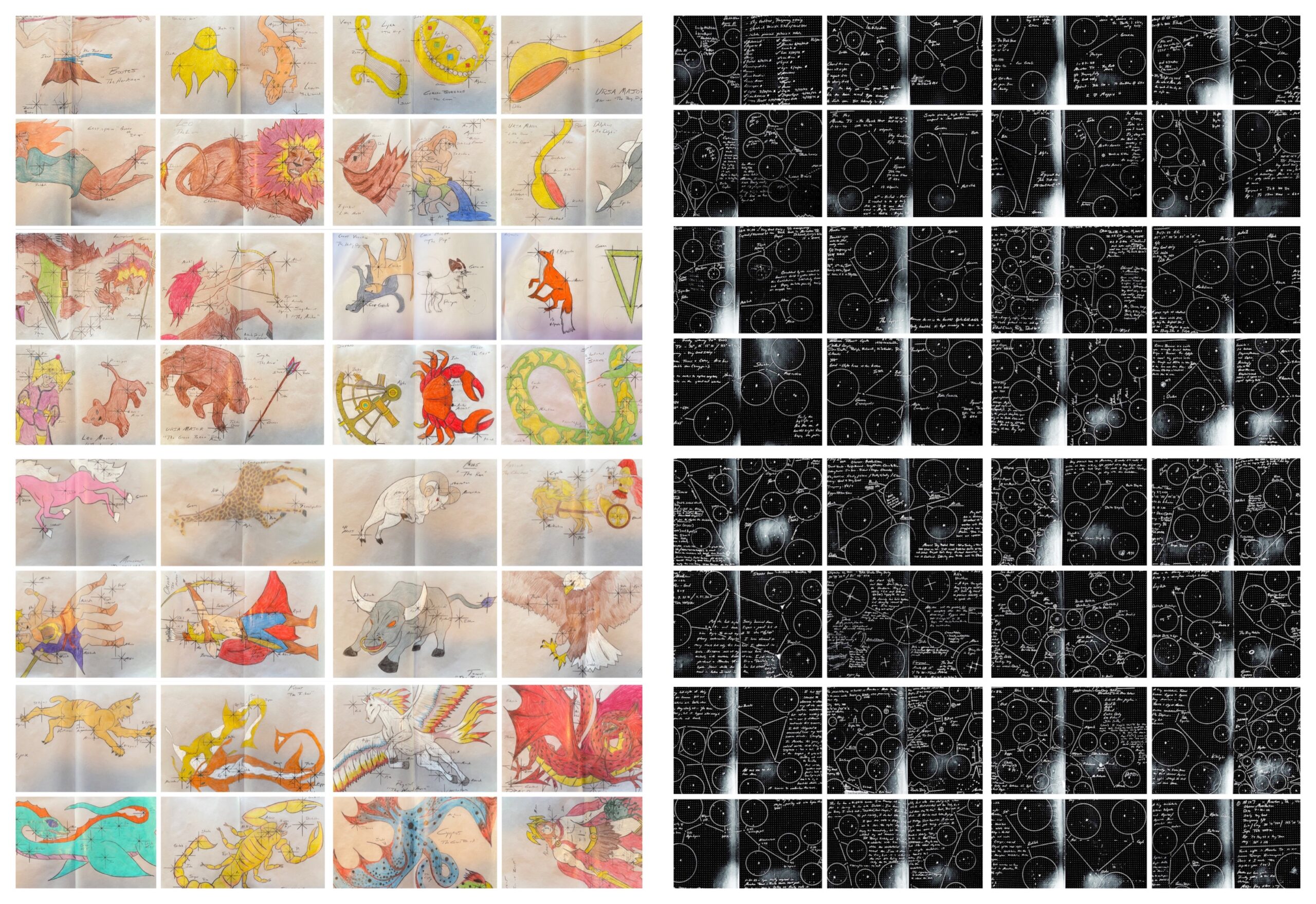
The Northern Hemisphere Constellation Hunter Program
Offered as an Observational Program by the Astronomical League
Before I begin, I want to say that I’m hoping this webpage will serve as my submission for this certificate. I’ll let you know if I succeed. Cliff Mygatt, who I believe is the observing program chair will be reviewing my data. If you are reading this Cliff, my thanks for all you do!
**UPDATE** The program has been accepted by Cliff Mygatt! Certificate & Pin in the mail! WooHoo!! **UPDATE**
For the last three years, I’ve been getting serious about my astronomical observing- to the point of completing several Astronomical League Challenges, as well as creating some of our own Astronomical Society in Chattanooga. Through all of that I have been working on this challenge- The Northern Hemisphere Constellation Hunter observing program. To be clear, I worked on this throughout other programs. As with any astronomical target, the night sky doesn’t deliver all at once, rather it spreads it out nicely. Then Mother Nature controls the invitations, and you MAY or MAY NOT be invited, depending on how much equipment you purchase, but I digress.
This journey, much like my Orion Project, is solely for self-betterment, education, to learn the night sky with a glance, and to better explain the beautiful universe we live in. What better way can you imagine learning the culture of humanity’s connection to that celestial sphere? Mythology I found was key, people’s understandings of the night sky. Through all this, I used David E. Faulkner’s guide- “The Mythology of the Night Sky”. Available here:
Armed with this guide and several other star charts, I set out to immerse myself in the principle stars visible from my Bortle 7 driveway in Chattanooga, Tennessee. Half way through, I found another great interest, and I’m pursuing it currently- MORE on that later. 😉
To date, I’ve observed all of the following:
| Progress | Constellation | Right Ascension | |
| [ x ] | Andromeda | 01 hr | + 40 deg |
| [ x ] | Aquarius | 23 hrs | – 10 deg |
| [ x ] | Aquila | 20 hrs | + 4 deg |
| [ x ] | Aries | 03 hrs | + 20 deg |
| [ x ] | Auriga | 06 hrs | + 39 deg |
| [ x] | Bootes | 15 hrs | + 40 deg |
| [ x ] | Camelopardalis | 06 hrs | + 69 deg |
| [ x ] | Cancer | 09 hrs | + 20 deg |
| [ x ] | Canes Venatici | 13 hrs | + 40 deg |
| [ x ] | Canis Minor | 08 hrs | + 5 deg |
| [ x ] | Cassiopeia | 01 hr | + 60 deg |
| [ x ] | Cepheus | 23 hrs | + 75 deg |
| [ x ] | Coma Berenices | 13 hrs | + 20 deg |
| [ x ] | Corona Borealis | 16 hrs | + 30 deg |
| [ x ] | Cygnus | 21 hrs | + 40 deg |
| [ x ] | Delphinus | 21 hrs | + 10 deg |
| [ x ] | Draco | 17 hrs | + 60 deg |
| [ x ] | Equuleus | 21 hrs | + 7 deg |
| [ x ] | Gemini | 07 hrs | + 22 deg |
| [ x ] | Hercules | 17 hrs | + 30 deg |
| [ x ] | Lacerta | 23 hrs | + 46 deg |
| [ x ] | Leo | 11 hrs | + 14 deg |
| [ x ] | Leo Minor | 10 hrs | + 34 deg |
| [ x ] | Lynx | 08 hrs | + 46 deg |
| [ x ] | Lyra | 19 hrs | + 35 deg |
| [ x ] | Monoceros | 07 hrs | 0 deg |
| [ x ] | Orion | 05 hrs | + 5 deg |
| [ x ] | Pegasus | 03 hrs | + 45 deg |
| [ x ] | Perseus | 04 hrs | + 46 deg |
| [ x ] | Pisces | 01 hr | + 10 deg |
| [ x ] | Sagitta | 20 hrs | + 20 deg |
| [ x ] | Serpens Caput | 17 hrs | 0 deg |
| [ x ] | Serpens Cauda | 17 hrs | 0 deg |
| [ x ] | Sextans | 10 hrs | 0 deg |
| [ x ] | Taurus | 05 hrs | + 20 deg |
| [ x ] | Triangulum | 02 hrs | + 32 deg |
| [ x ] | Ursa Major | 11 hrs | + 56 deg |
| [ x ] | Ursa Minor | 15 hrs | + 75 deg |
| [ x ] | Vulpecula | 20 hrs | + 25 deg |
So early on, I decided as I progressed through these constellations, I’d do more than JUST observe them… my college education was in Philosophy and Religion so I enjoy learning the culture and traditions of other peoples. Having said that, the idea of REALLY learning the mythos behind the night sky appealed to me on another level all together. The next thing you know I was using my -1986 -mother-sanctioned -Tuesday -and -Thursday art lessons to churn out what I knew and understood of the constellation in a sketch! Traced over the actual observation and sketch done from a session of observing, the drawing enhanced my understanding of the constellation and helped me find it. Enter David Faulkner’s book, and before you know It, I was engrossed in the battle of the heavens above us. From here, I slowly began to notice references to other celestial systems, namely, the Native American Indian’s understandings. After quite a bit of research into the Navajo zodiacal systems, I quite literally was hooked. From there, I researched the Creek, Cherokee, and Lakota systems. Many of my drawings take inspiration from those systems (Orion, particularly) paired with the Greek interpretation. In essence, this is a Zodiacal system of my understanding, influences and all.
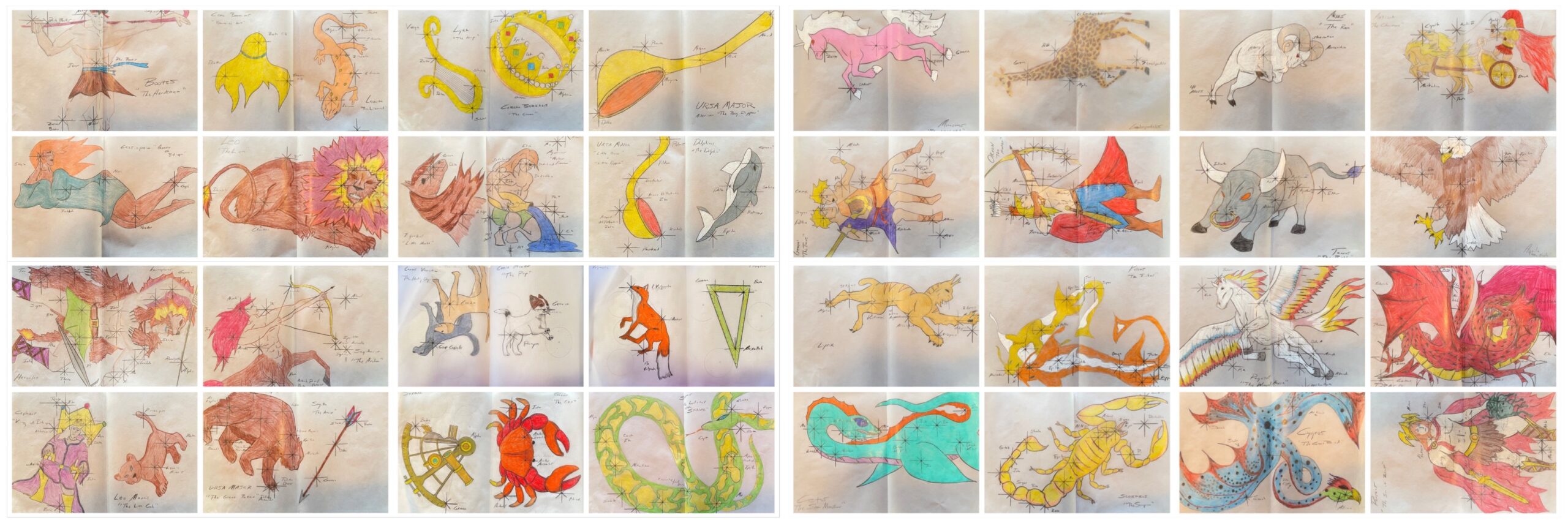
And that brings me to this post and ultimately my data. To better understand the presentation of the data, I’d like to highlight the process:
1- I plotted the constellations into my sky chart initially figuring out the best season in which to observe a particular constellation. Understanding when your target rises and sets is of the utmost importance when time is of the essence! I might add here that about half way through this process I figured out how to truly utilize the Sky Safari system, and it has quite honestly revolutionized my observing practices- more on that soon (in another post).
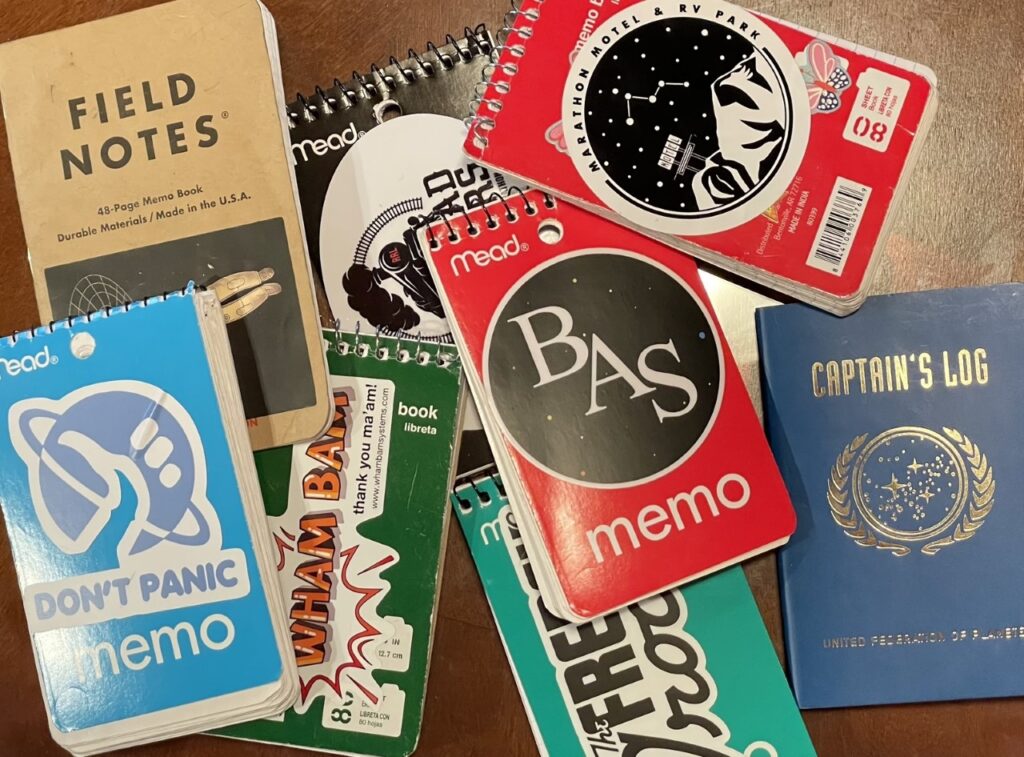
2. I used small notebooks to record my data from the telescope. I would use my green circle template stencil to draw a circle on each page with the principle star of the constellation I had set out to observe. On the back of every cover, there are countless constellations written down so I could find the needed constellation easily. The books filled up quickly- a tip I might add from one of my astronomical mentors, Ralph McConnell. This made short work of easily sketching my observing target and what I saw in the eyepiece.
3. Once the actual observation was complete, I then worked to transfer the data of the notebook to my observation journal. It is funny to me that I’ve already filled two of these just since my introduction to astronomy in 2012. One is full of notes from my Orion Project, and the other is full of astronomical observations. This spring, I hope to fill a black paper journal with the Messier Objects… working on that currently.
4. After the actual principle star was observed, transcribed in the notebook, and then finally copied into the journal, I used tracing paper to overlay the data and lay out a matching star field. It was from this star field that I set my imagination free. Drawing what my research, heartstrings, or whims willed. It was a wonderful outlet of expression.
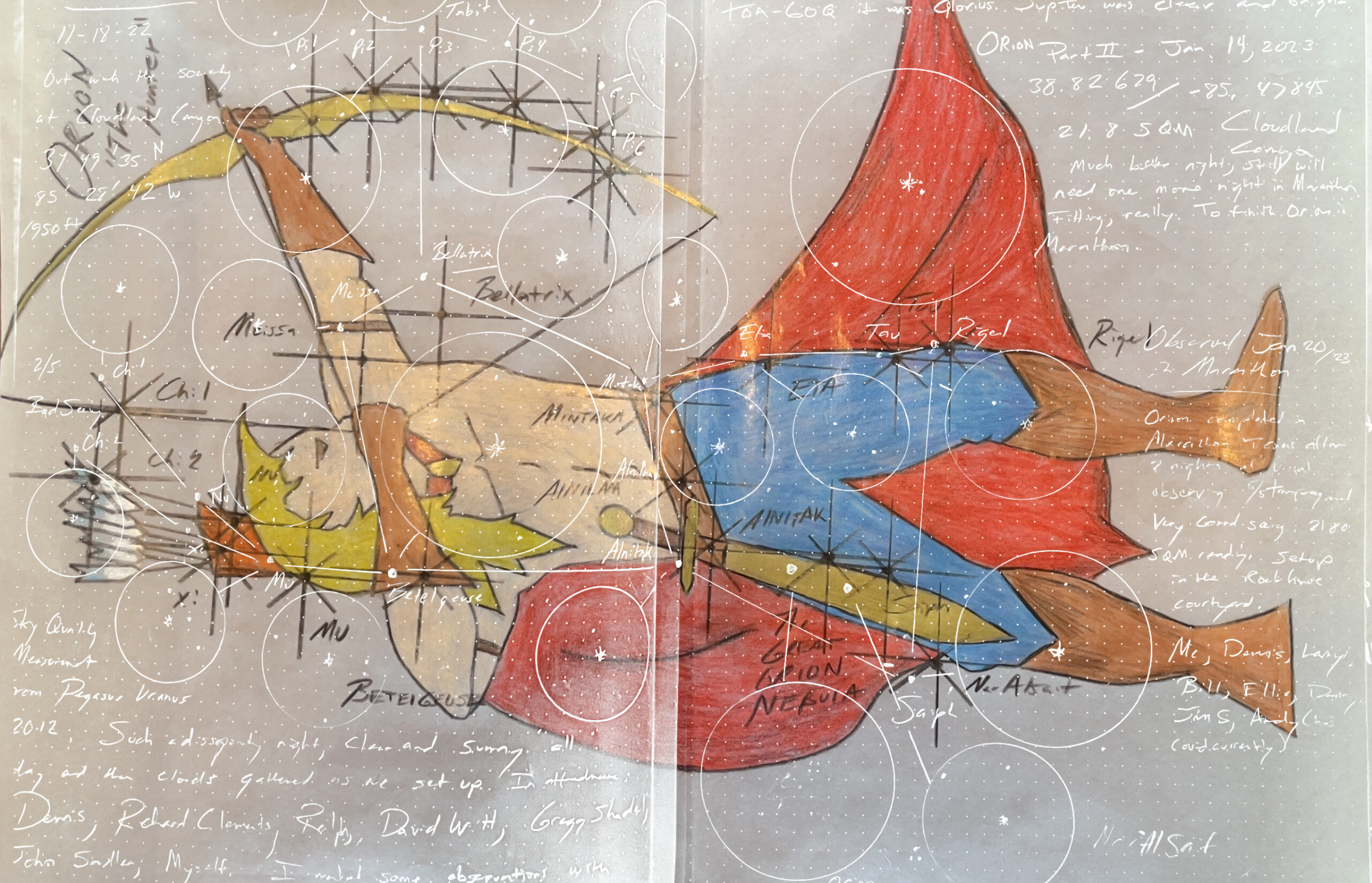
And that is how the entire process worked. I managed to complete all 39 constellations in a little under two years. Below, you can see the actual observation complete with the sketch. I think the presentation of the slider really adds a nice dimension to the data. Other than Aquilla which required a different orientation of sketch (because that’s what I see in the sky- and THAT is what this was all about in my opinion), the data overlays almost perfectly. Below, you can browse through all the sketches and data collected (minus the logbooks which are incorporated where appropriate).
I’d love to hear your thoughts on my project, or maybe even your completed program for comparison! Feel free to drop me a message below, or in email.
Until I make it to the Southern Hemisphere, Constellation Hunter Matt, signing off!
Clear Skies!
Matt
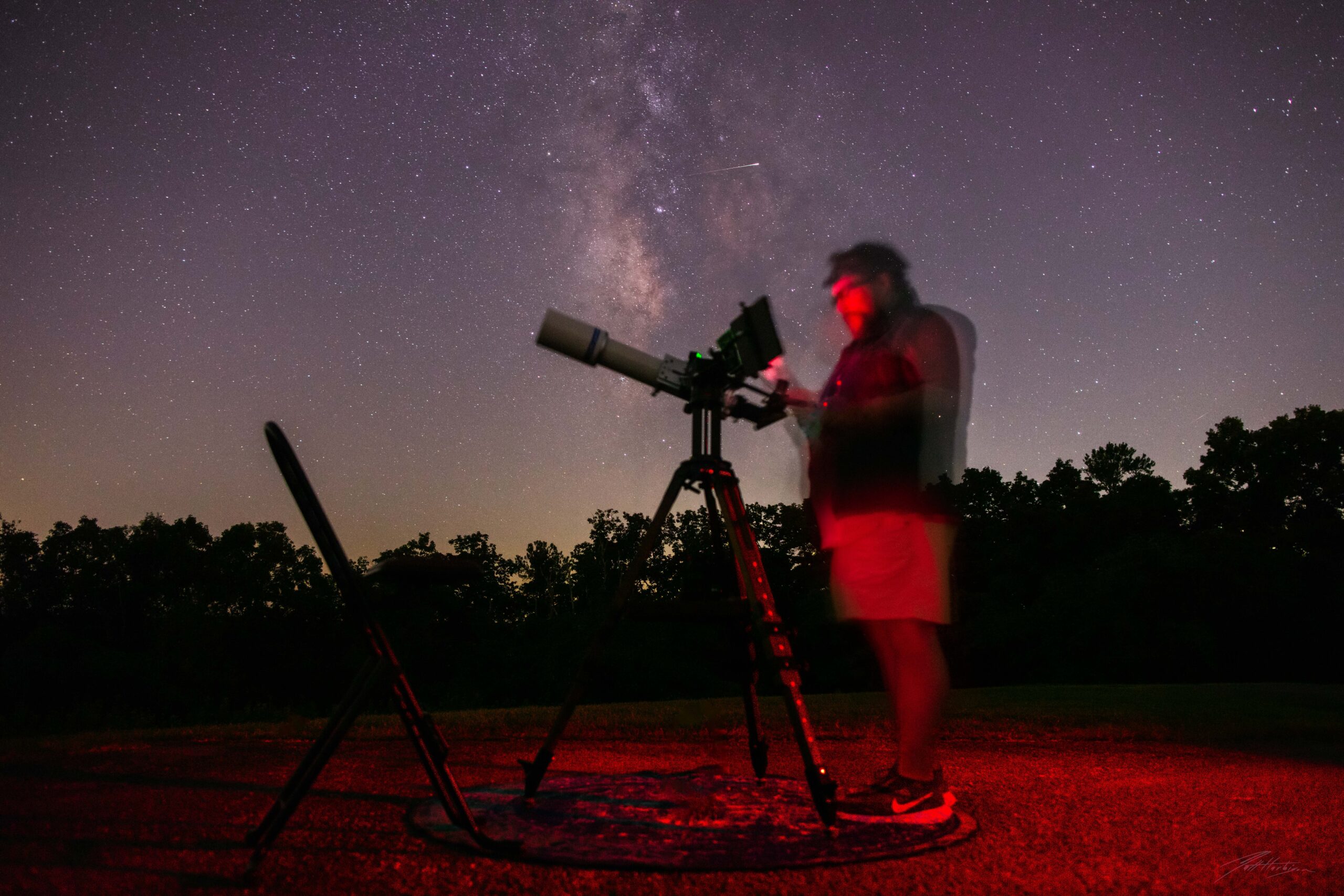
1- Cygnus


2- Leo


3 & 4 -Lyra/Corona Borealis


5- Ursa Minor (inverted because of data collection- it is correctly oriented on the page)


6- Delphinus


7- Hercules


8- Draco


9 & 10 – Ursa Major & Sagitta


11- Serpens


12 & 13 – Cephus & Leo Minor


14- Lynx


15- Scorpius


16- Sagittarius


17- Cassiopeia


18 & 19- Equuleus & Aquarius


20- Pegasus


21 & 22 – Coma Berenices & Lacerta


23- Perseus


24- Auriga


25- Orion


26- Gemini


27- Monoceros


28- Aries


29- Camelopardalis


30- Aquila


31- Taurus


32 & 33 – Sextans & Cancer


34 & 35 – Canes Venatici & Canis Minor


36 & 37- Vulpecula & Triangulum


38- Cetus


39- Pisces



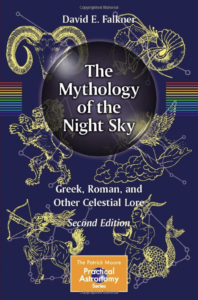
Matt this is absolutely incredible! Impressive work and professionally assembled as I would expect from you! You have some serious talent man!
Thanks for the kind words, Dennis! And I appreciate all the support along the way.
Fun stuff! Way to make it more than just working through a checklist! Thanks for sharing.
Thanks so much, Jim! Happy to share!